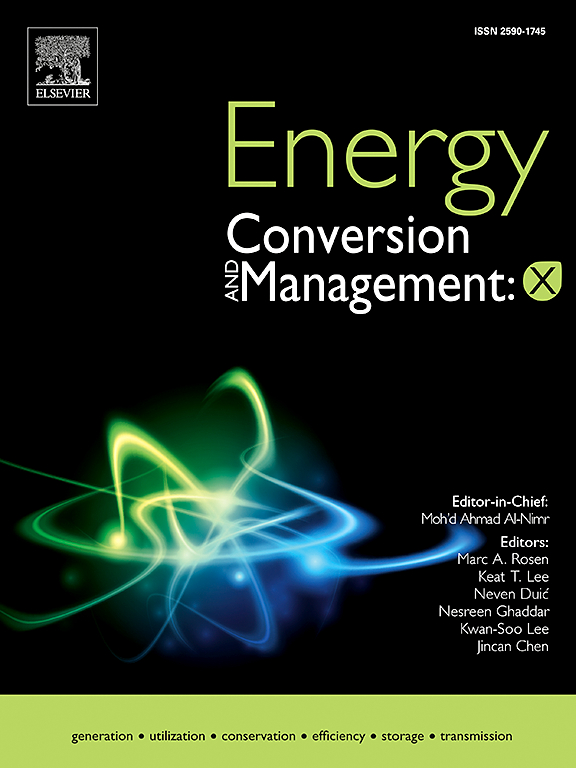Robust analysis of photovoltaic plants: A framework based on prediction uncertainties by machine learning
IF 7.1
Q1 ENERGY & FUELS
引用次数: 0
Abstract
Uncertainty in photovoltaic plants significantly affects performance and economic viability, making its management crucial for optimal design and operation. In this context, the present study offers a novel framework for comprehensively assessing the photovoltaic project development. Iran was selected as a case study, and using the k-means algorithm, the area was divided into eight clusters. Subsequently, a ten Megawatts photovoltaic plant was assumed in each region, and a comprehensive feasibility assessment was conducted, encompassing energy, economic, environmental, exergy, exergoeconomic, enviroeconomic, and energoeconomic aspects. Finally, the uncertainties were simulated using the Monte Carlo method. The gradient boosting regressor machine learning algorithm was predicted the PV plant for 10,000 different scenarios (R2 ∼ 98 %). The results showed the capacity factor and exergy efficiency of photovoltaic panels across Iran ranged from 23-27 % and 19.3–20.6 %, respectively. Additionally, the Levelized cost of electricity and payback period were in the range of 48–56 $/MWh and 13–16 years, respectively. Also, Monte Carlo analysis showed the probability of project failure for developing photovoltaic power plants in Iran was between 14–26 %. This assessment demonstrates the PV project development in Iranian cities is feasible and can serve as a reference for fossil-fuel-rich countries.
求助全文
约1分钟内获得全文
求助全文
来源期刊

Energy Conversion and Management-X
Multiple-
CiteScore
8.80
自引率
3.20%
发文量
180
审稿时长
58 days
期刊介绍:
Energy Conversion and Management: X is the open access extension of the reputable journal Energy Conversion and Management, serving as a platform for interdisciplinary research on a wide array of critical energy subjects. The journal is dedicated to publishing original contributions and in-depth technical review articles that present groundbreaking research on topics spanning energy generation, utilization, conversion, storage, transmission, conservation, management, and sustainability.
The scope of Energy Conversion and Management: X encompasses various forms of energy, including mechanical, thermal, nuclear, chemical, electromagnetic, magnetic, and electric energy. It addresses all known energy resources, highlighting both conventional sources like fossil fuels and nuclear power, as well as renewable resources such as solar, biomass, hydro, wind, geothermal, and ocean energy.
 求助内容:
求助内容: 应助结果提醒方式:
应助结果提醒方式:


